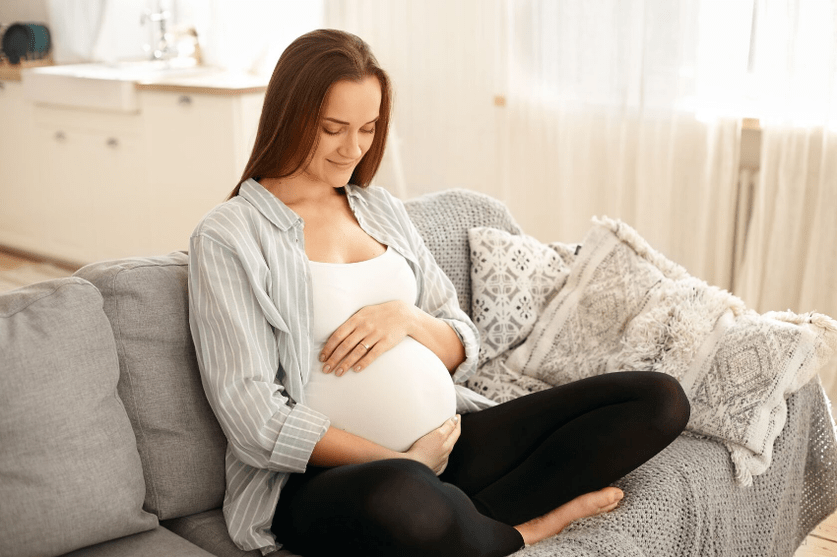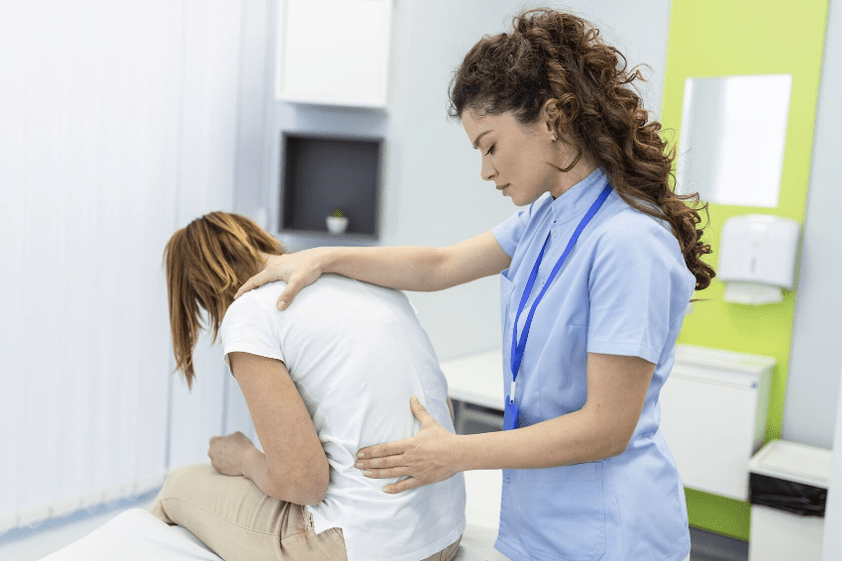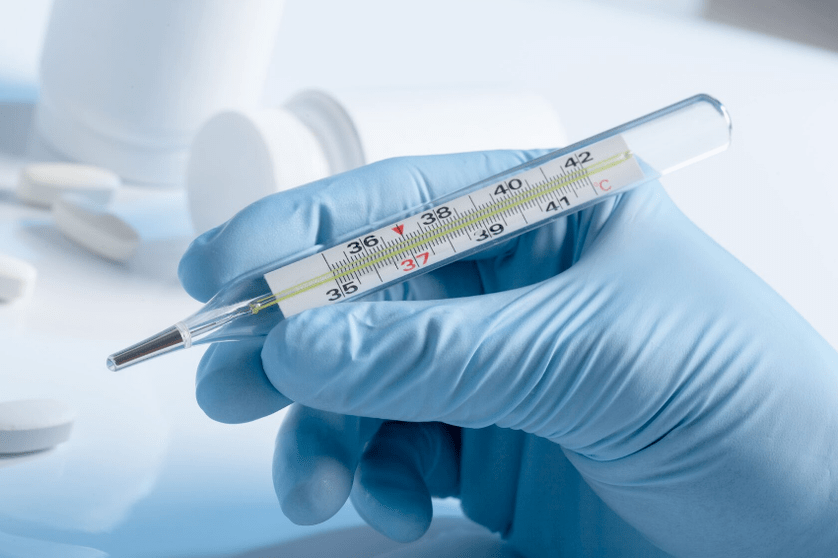
Back pain in the lumbar region may indicate various spinal diseases, disorders in the connection of nerve structures, injuries to internal organs, soft tissues, and oncological tumors. Pain syndromes can have varying intensity and nature of manifestation. Depending on the type of pain that occurs, pathology can be identified, but to get an accurate diagnosis, an examination is carried out, including instrumental diagnostics. This allows you to find out why the pain is occurring. Based on the results of the examination, the doctor chooses treatment.
Types of pain
Back pain in the lumbar region may indicate the development of a serious pathology. But in most cases, discomfort is benign and associated with the influence of various external factors:
- hypothermia;
- staying in an uncomfortable position for a long time;
- compression of blood vessels;
- soft tissue damage due to trauma.
When diagnosing back pain, doctors pay attention to the nature of the manifestation and its duration. If the pain occurs as a result of cold or simple hypothermia, it will disappear completely 2 weeks after using an ointment containing non-steroidal anti-inflammatory components. They will not help cure the disease, but after them it does not hurt to move.
If the pain in the spine does not go away, despite the use of local drugs, and sometimes gets stronger, a full examination is required. In some cases, such symptoms are an alarming sign that indicates the development of a dangerous disease. With spinal disease, at the time of an attack, pain can radiate to various parts of the body: legs, arms, groin. Often such attacks are accompanied by unpleasant sensations in the body: numbness, tingling, goosebumps, burning.
In most cases, pain in the lumbar region occurs suddenly, is acute and resembles lumbago (lumbago). Patients themselves describe the pain as shooting, sharp, sometimes squeezing and less intense. At the moment of the attack, one's movements are restricted, and it is possible to straighten the lower back only through pain. Movement does not bring relief and sometimes causes increased pain. An acute condition may last only a few minutes, but sometimes it continues for a day or more.
Women and men over the age of 50, as well as people with serious injuries, experience chronic pain in the lower back. In this case, it is persistent, but acceptable; patients noted only mild discomfort, stiffness of mobility in the morning, and pain at night. Chronic pain attacks can be triggered by stress, heavy lifting, or hypothermia. The rest there is no pain, there is stiffness and discomfort.
Back pain in pregnant women
Women often experience lower back pain during pregnancy. Its occurrence is associated with natural changes. As the fetus grows, around the second trimester of pregnancy, changes in the center of gravity occur, causing postural deformation with deflection in the lumbar region. These changes are not dangerous, they occur suddenly in more than 70% of women, but they need to be monitored because they can lead to serious health problems in the future.
During pregnancy, no special treatment is carried out. To ease the intensity of the painful attacks, the doctor may recommend that the woman take a topical NSAID. In some cases, it is recommended to wear a support structure to ensure the correct distribution of the load on the spine.

Also, expectant mothers should not ignore the general rules; they must rest often and avoid wearing high-heeled shoes. Be careful when bending over to pick things up. Straighten your back and straighten it, then you need to get up as slowly as possible. You should also pay attention to choosing a bed at home; it should be comfortable.
Pain at night and morning
If severe discomfort bothers a person mainly at night and occurs in the morning immediately after waking up, the problem should be sought in the quality of sleep at night. The manifestation of very painful sensations is associated with the incorrect position of the body at night during the rest period. The first thing you should do at home is replace the mattress, bed and pillows. It would be nice if the bed was orthopedic.
If the pain is observed only in the morning, it is worth considering the possibility of making a sudden movement after waking up. It is better to get up early and do a light warm-up of the muscles and joints while lying in bed. When you regularly do such exercises, you can forget about the manifestation of pain. It will be easier to bend, and the feeling that your back is stiff will disappear. It will be easier to wake up after warming up.
It is also worth considering that the spine and lower back suffer from excess body weight. Back pain problems are more common in obese individuals, as well as in patients who lead a sedentary lifestyle. After normalizing behavior and improving the quality of night rest, periodic pain disappears if it is not associated with any disease.
Lower back pain spreads to legs
Pain that occurs in the back can spread throughout the body. Often it radiates to the feet, and can involve part of the foot and reach the heel. The cause of pain is sciatica, lumbago or radiculitis, that is, pathology related to damage to nerve tissue. Due to changes in the structure of the cartilage tissue, which leads to the deformation of the vertebrae and the formation of osteophytes, pinching of the nerve endings occurs, against the background of which sharp pain attacks appear, radiating to the legs.
Acute pain
The duration of acute pain attacks varies. They can last from a few minutes to a few weeks. Chronic pain can manifest itself unexpectedly and suddenly for a person; the patient gets used to it and may not feel it when the attack passes.
Attacks of acute and unbearable pain in the lumbar region are characteristic of various diseases:
- scoliosis;
- myositis;
- arthritis;
- arthrosis;
- neurological lesions;
- tumor process;
- osteomyelitis;
- spondylitis
If the pain has a shooting character, this means that the roots of the spinal cord are involved in the pathological inflammatory process. If the pain seems dull, dull, and spreads to the abdominal cavity, inflammation of the liver should be suspected. A severe attack that disturbs consciousness and causes its loss can signal urolithiasis or pyelonephritis.
Causes of back pain
Back pain in the lumbar region can have different causes. Many of them lead to the development of pathologies that significantly reduce the quality of life, where pain becomes a constant companion. Trying to overcome the problem yourself is almost useless and difficult; accurate diagnosis and selection of competent treatment can only be done based on instrumental diagnostic results.
The most common causes of back pain:
- intervertebral hernia protrusion;
- osteochondrosis;
- disturbances in the function of the gastrointestinal tract;
- curvature of the spine;
- tumors;
- damage to muscles and ligaments;
- soft tissue infection.

Often the cause of pain is simple hypothermia, which affects the largest nerve in the human body, the sciatic nerve. Also, against the background of hypothermia, it may become pinched, which causes acute pain. Other factors can trigger an attack:
- physical inactivity;
- excessive nervous tension;
- hard physical labor;
- damage and injury.
Lower back pain can occur with urolithiasis; they accompany the attack. They are also a feature of many venereal diseases. Pain in the lumbar region in women is not always pathological. It is a physiological norm if it occurs before menstrual bleeding or at the onset of menopause. In this case, the condition is not dangerous and can be controlled through the use of painkillers. With all the pathologies listed, it is problematic to move, bend, or do any work at home.
Spine disease
The main causes of back pain are various diseases, deformities and lesions on the spine. Pain can be of a completely different nature. The intensity of their manifestations depends on many factors and varies greatly depending on the part of the spine affected. The most common types of pain observed are:
- periodic;
- local or local;
- pulling or squeezing;
- burning and cutting;
- shooting
The intensity of the manifestation of symptoms may depend on stress, sitting in an uncomfortable position on a chair, sports and physical activity. The discomfort increases when you stand or sit awkwardly. When muscle fibers spasm, lumbago is observed, and the whole area hurts. With such pain, stiffness of movement occurs, the symptoms spread to the back of the thigh, and can reach the calf and even the foot. Much depends on the type of disease and its nature. Pathology must be treated by a specialist.
Intervertebral hernia
Intervertebral hernia of the lumbar region is often formed with osteochondrosis in the late stages of development. They usually cover most of the lumbar region, the lower back, and are formed between the 4-5th vertebrae, as well as in the sacral region. The pain syndrome in this case is unpleasant, disturbing, it is associated with damage to the nerve roots, and poor blood circulation occurs. The pain is similar to that of radiculitis, and gets worse when you stand or sit on an uncomfortable stool. If the hernia formation is large, it compresses the spinal cord, a person experiences a loss of sensitivity, and in complicated cases, paralysis may be caused by a hernia that gets between the intervertebral discs.
You can understand what bothers you about intervertebral hernia with the appearance of the following episodes:
- it is impossible to stand without support on a chair or other surface, this is due to the increased load on the intervertebral disc;
- lying on your stomach is very uncomfortable;
- feeling of stiffness in the back;
- difficulty bending forward;
- arching the back is impossible because of the pain that prevents movement.
Hernia treatment is provided conservatively and surgically. The appropriate method is determined depending on the patient's condition. Treating the disease conservatively in advanced cases is ineffective.
Rachiocampsis
With a small curvature, pain does not appear. A feeling of fatigue may occur; a person wants to spend more time lying down, because the pain becomes stronger when standing or sitting. Various neurological disorders occur with second degree disability. At this stage, pain occurs, which can manifest itself moderately and moderately intense, present on the left and right. As the disease progresses, the discomfort increases during the day, in the advanced form it becomes unbearable, and is not relieved by local and systemic painkillers. It is difficult to completely eliminate the manifestation; curvature can be cured quickly.

Osteoporosis
This disease often occurs in men and women over the age of 50. Pathology is characterized by rapid loss of bone tissue. Due to such loss, fragility occurs, vertebrae become less strong, and damage may occur even with minor injuries, physical exercise, or heavy lifting. The patient bends only through discomfort and returns from the bent position with severe pain. For someone to pick something up from the floor, it is better to sit and straighten your back, and then straighten. If you sit first, the health risk of osteoporosis will decrease.
Pain in osteoporosis is not only caused by broken bones. This disease is dangerous, it can be used to register a disability group.
Spinal cord injury
The most common injury is bruising. If it is mild, there is moderate discomfort. It tends to increase during the day with movement, causing local swelling with hematoma and bleeding. Symptoms always improve with movement and exercise. In severe cases, the problem is not only painful, it can be accompanied by neurological disorders, especially if nerve endings are involved in the process. It is impossible to get rid of the problem completely; it is not always possible to heal from injuries even through surgery.
Soft tissue and kidney injury
With soft tissue bruises, mild pain appears, which subsides after local application of anti-inflammatory compounds. The pain is always localized, the bruised area swells, and bleeding is possible.
If, in combination with the described symptoms, pain in the lumbar region on the left side is accompanied by the appearance of blood in the urine, this means that there is damage to the kidneys. The discomfort will be more intense; with serious injury to the organs of the excretory system, urination is disturbed or becomes impossible. Hematomas may occur on the lower back. The development of shock and life-threatening conditions are not excluded.
Spinal infection
Infectious lesions of the spine are more dangerous. Osteomyelitis can:
- after surgery;
- after trauma;
- contacts;
- hematogenous.
In acute cases, the disease develops at lightning speed. It is characterized by increased manifestations of pain that increase during the day, accompanied by high body temperature and a very strong deterioration in the general condition. The nature of the discomfort can be different: twitching, pressing, bursting. The attack is severe, preventing movement and forcing a person to freeze in one position because it hurts to move. In chronic pathology, fistula may appear with the formation of purulent discharge.
An uncommon but dangerous disease of the spine is tuberculosis of the spine. Already in the early stages of development, it causes deep and very strong pain below, which reaches its peak after exercise. The gait of men and women stiffens. When the bone structure is destroyed, the nerve root is compressed, the pain becomes burning and spreads to the lower part of the body.
With a spinal epidural abscess, the pain is quite deep, very strong, accompanied by shivering and muscle tension. Against the background of progress, radicular syndrome increases, paresis occurs, and the function of pelvic organs is disturbed.
Muscle damage
Painful discomfort in the lower lumbar region can occur after physical activity, heavy lifting, or intense exercise. It also manifests itself during a long stay in a static position with tension in the lower back and gluteal muscles.
With such lesions, discomfort manifests itself less strongly during rest and after rest, after using warming ointments. Muscle damage or myositis occurs not only against the background of infection. It can be provoked by stress and hypothermia of the body, severe poisoning, and metabolic disorders. This condition is most often accompanied by excruciating pain.
Myofascial syndrome
Myofascial syndrome is classified as a painful condition where discomfort in the lower back is associated with painful muscle tension. During an attack, trigger points appear in the affected area. The source of pain is muscle and fascia, the connective tissue. To treat this pathology, experts prescribe painkillers, non-steroidal anti-inflammatory drugs and sedatives.
In some cases, it is indicated to treat the disease using centrally acting muscle relaxants. Such drugs are designed to reduce tonic tension, reduce excitation and trigger relaxation of the muscles involved in the spasm, so that the person can bend. In some cases, specialists use point block by giving anesthetic.
Tumors of the spine, kidney
Tumors of the spine and spinal cord are relatively rare. The frequency of detection of the disease is no more than 0. 5% of the total number of diagnosed cancer pathologies. Neoplasms can be either benign or malignant. Depending on this, the prognosis varies significantly.
With this pathology, the distinctive symptom is pain in the lumbar region. With benign etiology, discomfort is eliminated through the use of medications. If the formation is malignant, the treatment must be complex, often reduced to surgery.
Also, pain in the lower back on the left side can be detected with kidney cancer. It will have a clear character, it can be painful, pressing, breaking. Discomfort increases over time, and urinary disorders develop. Do not steam or apply heat to the affected area. Normalization of the situation is possible after the formation is removed.
What to do after acute back pain
If acute back pain appears for a while, the situation can be controlled on its own. If possible, you should visit a specialist and undergo an examination to reduce the risk of repeated attacks.
It is necessary to contact a specialist immediately if the following symptoms occur:
- lower back pain of any nature persisting for a week;
- against the background of pain, body temperature rises;
- discomfort manifests itself at the site of previous injuries and damage;
- pain spreads throughout the body;
- The sensitivity of certain areas is lost.

In this case, the pain cannot be ignored. It is important to see a doctor as soon as possible and start treatment, otherwise the disease will progress.
Which doctor should I contact?
If you suspect the development of a disease of the musculoskeletal system, you should consult a traumatologist or neurologist. The specialist will conduct a survey, physical examination and prescribe the necessary instrumental examination. If your back hurts suddenly, you can call an ambulance. You can use pain relief gel at home.
If you suspect that pain in the lumbar region is caused by kidney damage, you should visit a urologist or a nephrologist. You can also see a therapist. Any specialist will tell you what to do for lower back pain that appears on the background of kidney disease, and will also prescribe additional examinations. Laboratory tests of the patient's blood and urine are required; they are needed to confirm or deny the disease.
If lower back pain occurs sporadically in women, and it is associated with menstruation or menopause, it is appropriate to raise this problem with a gynecologist. Specialists will help you choose a treatment that will eliminate discomfort. In cases where you need to explain the origin of the pain syndrome, you should visit a therapist, family doctor or general practitioner. The doctor will conduct an examination and determine the initial cause of the violation.
Diagnostics
There are many factors that can cause pain in the lumbar region, so even an experienced doctor cannot make an accurate diagnosis without an examination. The following methods are used as part of diagnostics:
- X-ray examination of the painful area;
- MRI;
- Ultrasound of pelvic and abdominal organs;
- general analysis of urine and blood;
- electroneuromyography.
If the pain occurs against the background of pathology of the genitourinary system or gastrointestinal tract, an endoscopic examination of the intestine may be necessary. If the development of a neoplasm in the body is suspected, a biochemical blood test is performed.
Treatment
The intervention regimen required for the treatment of back pain is selected individually. The main rule is that therapy should be comprehensive, including symptomatic treatment and lifestyle changes. Treatment is chosen after the doctor determines the cause of the pain.
Regardless of the cause of back pain, all patients should follow these rules:
- do not lift heavy objects;
- bend and straighten your back when sitting;
- abandon heavy sports;
- if you are fat, you should lose weight;
- change the bed, make it comfortable;
- Carry out the usual minutes of physical education while sitting directly on a chair or armchair;
- light sports;
- do not take a steam bath, do not visit a sauna, do not take a hot shower;
- wear a support bandage (as prescribed by the doctor).
For diagnosed spinal pathology, the treatment complex also includes the following recommendations:
- Medical influence. The use of pain relievers, anti-inflammatories, and decongestants is indicated. Medicines can be prescribed for oral administration and topical use in the form of creams, gels, or ointments that relieve pain.
- Restriction of the lumbar region.
- Physiotherapy. Patients are given physical therapy, massage, magnetic therapy, and electrophoresis.
- Acupuncture, manual therapy, osteopathy.
In severe cases, when conservative interventions for spinal pathology do not produce results, surgical interventions are performed.
The information in the article should not be the basis for self-diagnosis and treatment; it is provided for informational purposes only. You should not take any medicine without consulting a specialist.
Trying to figure out how to get rid of lower back pain and why your back hurts on its own is almost useless. It can have different properties, depending on the effective method of influence chosen. Self-medication for many pathologies is ineffective and dangerous, because it leads to a deterioration of the condition.















































